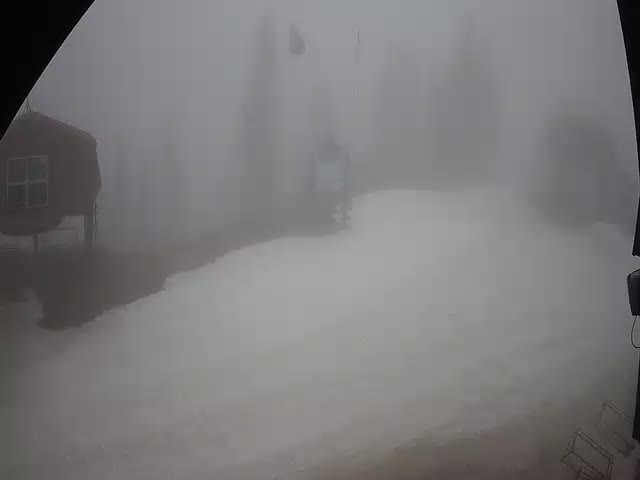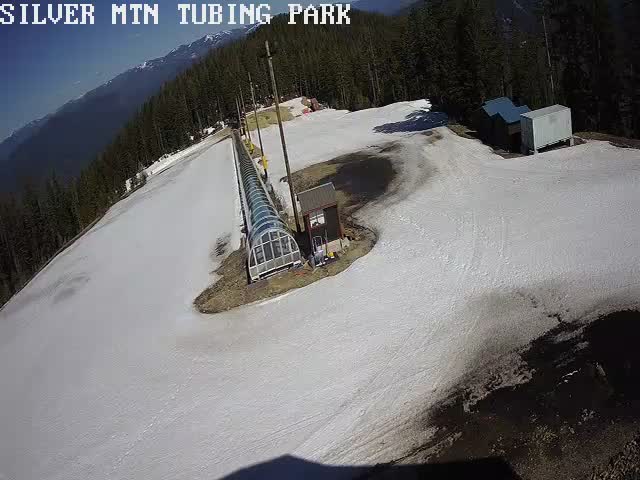Kellogg Live Cam
A beautiful city in the Silver Valley of Shoshone County, Idaho






Northwest Skiing & Snowboarding at its best
Silver Mountain in the Bitterroot Range. Northwest and Idaho locals have skied here for years, delighting in 300 inches of annual snowfall back when they called it Jackass and lift tickets were 5 bucks. There are still some awfully sweet deals, but you don't have to drive up a snow covered mule trail to get here anymore.
Yes, it's shamefully easy to get 6,300 feet of altitude in a hurry. An interstate freeway leads straight to an 8-passenger gondola, and then you're gazing eagerly at 50 runs and 2,200 vertical. It's so simple. Instead of making your turns on icy mountain roads, you make them on the slopes – floating down Wardner Peak, tackling the North Face, or cruising Silver Belt.
Each of our guests has their own experience, and each finds something different to love. They rave about the awesome Northwest Idaho powder and ridiculously short lift lines. Or the secret stashes you discover unexpectedly. Or the friendly smiles, the free ski waxing, and other signs of Western hospitality. Or our emphasis on family skiing, with nationally acclaimed children's programs, day care, and cost-conscious prices.
Silver Mountain will free your soul and capture your heart. So come ride the Motherlode of excitement, of fun, of snow. Silver Mountain is very accessible to the major metropolitan areas in the Northwest. Silver Mountain is a 70 minute drive from Spokane and less than 6 hours from Seattle. The Gondola base is located only 1/4 mile off I-90 in Kellogg, Idaho.
Idaho borders six U.S. states and one Canadian province
Idaho's early history closely mirrors that of the American West as a whole. It was here Meriwether Lewis and William Clark realized in 1805 there was no direct Northwest Passage to the Pacific Ocean as President Thomas Jefferson had hoped. But it was also in Idaho that the early explorers discovered a land of natural bounty that had sustained Native Americans for generations. The Kootenai, Kalispel, Coeur d'Alene, Nez Perce, Shoshone-Bannock, and Paiute peoples all lived here centuries before white settlement.
Hearing of Lewis and Clark's findings, fur trappers and mountain men slowly came west to try their luck in this rugged country. David Thompson built Kullyspell House near the shores of Lake Pend Oreille in 1809, the first of several major trading posts in what would become Idaho. The trappers and traders were followed by missionaries and pioneers who traveled via the overland trails, then by prospectors who discovered mineral wealth in the Boise Basin, the Wood River Valley, Silver City, Pierce, and the Coeur d'Alene Mountains.
Idaho's odd shape leads many people to observe the state must have been carved away from other states, and it was. At various times, Idaho was part of the Northwest Territory, the Oregon Territory, and the Washington Territory, but in 1863 it became a territory all its own.
The Gem State's population, 88,548 at the time of statehood, nearly doubled to 161,772 by 1900 and again to 325,594 by 1910. Highlights of these years included boom-and-bust mining activity and the establishment of an unprecedented irrigation system in South Central Idaho. Like all America, Idaho faced hard times in the 1920s and 1930s, but the state also became the nation's leading silver producer in 1934. Sun Valley was established as the nation's first destination ski resort in 1936, and the state's first north-south highway (U.S. Highway 95) was completed in 1938.
Idaho played numerous roles in World War II, from the establishment of Farragut Naval Training Station -- second largest in the world -- at Lake Pend Oreille to the housing of Japanese-American prisoners of war at internment camps at Hunt. The nuclear navy was developed on the grounds of the Idaho National Engineering Laboratory in Eastern Idaho and on July 17, 1955, the town of Arco became the first in the United States to be electrified by atomic power.
Idaho marked its territorial centennial in 1963 with a population of 667,191. The world focused its attention on the state in 1972, when a fire at Kellogg's Sunshine Mine killed 91 men; in 1974, when daredevil Evel Knievel unsuccessfully attempted to jump across the Snake River Canyon on a rocket-powered motorcycle; and in 1976, when the Teton Dam broke, killing 11 and forcing 300,000 people from their homes.
In 1979, Frank Church followed William Borah's lead in becoming chair of the U.S. Senate Committee on Foreign Relations. Idaho battled recession during much of the 1980s, and seized the national spotlight again when convicted killer Claude Dallas escaped from the Idaho Penitentiary in 1986, remaining at large for nearly a year before his capture in California.
Idaho's population finally topped one million in the 1990 Census, just in time for the statehood centennial. The '90s have been marked by several summers of intense forest fires, by the Olympic and World Cup achievements of Idaho skier Picabo Street, and by the growth of a robust economy that is among the healthiest in the United States.
Don't miss
Planning a trip to Idaho? Here's a selection of must-see attractions in every region:
- Bear Lake (Southeastern Idaho) -- Noted for its singular shade of turquoise, this lake on the Idaho-Utah border south of Montpelier also is known for its fishing, boating, camping, and water-skiing.
- Bruneau Sand Dunes State Park (Southwestern Idaho) -- Home of some of the highest sand dunes in North America. Hiking, camping, fishing. South of Mountain Home.
- Cataldo Mission (North Idaho) -- Idaho's oldest standing building is located along Interstate 90 east of Coeur d'Alene. Built entirely without nails.
- Cedar Street Bridge.
- Coeur d'Alene Lake.
- Craters of the Moon National Monument (Central Idaho) -- This eerie landscape near Arco was used by astronauts in preparation for their lunar explorations. Camping, hiking, cave tours, cross-country skiing, scenic drive.
- Dworshak Dam and Reservoir (North Central Idaho) -- The largest straight-axis dam in North America has created a 53-mile long lake. The nearby Dworshak National Fish Hatchery is the world's largest producer of steelhead trout. At Orofino.
- Fort Hall (Southeastern Idaho) -- Idaho's largest Native American community is the site of an Indian Festival each August.
- Ghost towns (Southwestern Idaho) -- Idaho City (northeast of Boise via Idaho Highway 21) and Silver City (west of Mountain Home via state highways and gravel road) are two of the most prominent reminders of Idaho's mining boom.
- Hells Canyon National Recreation Area (North Central Idaho) -- Hells Canyon is the deepest gorge in North America; its location against the Seven Devils Mountains makes it deeper than even the Grand Canyon. Jet-boat tours available, plus whitewater boating, hiking, horseback riding, scenic drive.
- Henry's Fork (Eastern Idaho) -- Close to Yellowstone National Park, the Henry's Fork is known worldwide for excellent fly-fishing. Also nearby: the Mesa Falls Scenic Byway, featuring two of the largest undisturbed waterfalls in the West.
- Lava Hot Springs (Southeastern Idaho) -- This small resort town southeast of Pocatello features an array of hot pools for soaking and swimming.
- Nez Perce National Historic Park (North Central) -- Unlike most national historic parks, this is actually a collection of sites tracing tribal history and culture. The park's headquarters is just east of Lewiston in Spalding.
- Payette Lake.
- Pend Oreille Lake.
- St. Anthony Sand Dunes (Eastern Idaho) -- About 150 square miles of sand dunes can be found 50 miles north of St. Anthony. Popular with all-terrain vehicle riders.
- Sawtooth National Recreation Area.
- Shoshone Falls,
- Silver Mountain Gondola (North Idaho) -- Ride three miles and 3,400 vertical feet into the mountains above Kellogg. Operates nearly year-round.
- Silver Valley (North Idaho) -- Centered in Wallace and Kellogg, this was once the world's top silver-producing area. Museums and tours.
- Sun Valley.
- World Center for Birds of Prey.
Fun facts
- Idaho has the largest wilderness area, the most mountain ranges, and the most miles of whitewater rivers of any of the Lower 48 states.
- A 1983 earthquake in Idaho's remote Lost River Valley measured 7.3 on the Richter scale -- one of the largest in the continental United States this century. (Southern California's 1994 Northridge quake, by comparison, measured 6.8.)
- Idaho elected the nation's first Jewish governor. Moses Alexander served from 1915 to 1919.
- Idaho is the only state to have a state seal created by a woman. Emma Edwards Green's entry in the 1891 design contest bore only her initials, since she thought officials wouldn't choose it if they knew it had been drawn by a woman.
- The state seal was updated in 1957, but the original may still be seen in the Idaho Capitol -- on a display case bearing a gold leaf statue of George Washington. The statue was carved by candlelight by Charles Ostner, an Austrian immigrant. It took him four years to complete the work, which he presented to state in 1869.
- Idaho is a casual state. Your favorite jeans, sweaters, shorts, and sportshirts will be welcome just about everywhere (although even Idahoans like to dress up once in a while for special nights on the town).